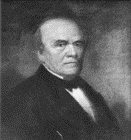History of the College

Martin Methodist College bears the name of Thomas Martin, who provided for the establishment of a school for girls in Giles County, Tennessee, by giving the original endowing gift of $30,000 in stocks and additional funds for buildings and grounds through a provision in his will in 1870. His bequest was the fulfillment of a dream of his daughter Victoria who, before her death at the age of twenty, requested that her father establish a school for young women. The first graduating class, in 1874, was composed of four young women: Emma Bramlette, Mildred Ezell, Mollie McBride, and Mamie Wilson. And now, 150 years later, Martin Methodist College is celebrating its sesquicentennial.
Martin, the son of a Methodist minister, was born in 1799 and moved to Pulaski, Tennessee, while he was a young man. He possessed unusual business acumen and made his mark in the business world early in life, soon becoming a millionaire. He was a friend of President James K. Polk of nearby Columbia, and was once offered the position of United States Treasurer. Martin served as president of the Nashville and Decatur Railroad and as president of a local savings bank; an influential political figure in the region, he was a loyal member of the Methodist Church in Pulaski. The College moved to its current location in 1875, on seven acres purchased from Governor John C. Brown for $16,000. For many years the College was operated as a four-year boarding college for women, with an elementary division for the children and young people of Pulaski. Many persons of influence are numbered among its illustrious graduates. Its first building stood near the current site of Martin Hall. As the College grew, new facilities were added and the site of the campus expanded.
In 1908, an agreement was reached whereby the Board of Trustees transferred the College into the hands of the Tennessee Conference of the Methodist Episcopal Church, South. The name was changed from Martin Female College to Martin College, and financial support for the institution, as well as its influence, began to increase. In 1938, the College became coeducational. The number of male students has grown until the student body shows a ratio of approximately half women and half men. As the College grew, adjoining property was purchased and added to the campus.
In 1983, the College constructed the Robert E. Curry Christian Life Center from the proceeds of a capital funds campaign. Martin Methodist College students, faculty, and staff, as well as persons from the community and the churches of the Tennessee Conference use the center.
In April, 1986, the Board of Trustees added the word “Methodist” to the College’s name. This addition affirms Martin’s strong ties to The United Methodist Church and clearly states the undergirding values of the Wesleyan tradition.
Martin Methodist College became a four-year institution beginning with the 1993-94 academic year. The decision by the Board of Trustees to become a baccalaureate-degree granting institution was one of the most far-reaching decisions in the history of the College and was implemented to expand and enhance the opportunities to achieve the College’s objectives.
The College purchased the stately antebellum home of former Governor John C. Brown in 1995, located on the east side of the campus adjacent to Upperman Hall. Damaged by age, fire, and winds, the home has been reconstructed and is now known as Herbert and Grace Grissom Colonial Hall, using as much of the original material from the old structure as possible. The building houses administrative offices, reception and meeting rooms, and the Senator Ross Bass Archives.
In 1998, the College purchased 44 acres 1.5 miles east of the main campus. This facility includes a baseball and softball complex, a soccer field and practice field plus an indoor practice facility that includes coaches’ offices.
In January 1999, the Board of Trustees of Martin Methodist College made the momentous decision to grow in the size of the student body to at least 1,000 students. This decision set into motion a ten-year plan, Martin 2010, which included the ability to offer expanded programs and services for students.
In April 1999, the Turner Center at Martin Methodist College was established as part of its mission as a church- related institution of higher education. The center trains and supports church leaders, both lay and professional, and provides an ambitious level of service to the churches of the region.
In 2009, the “old gymnasium,” originally constructed in 1931, was completely renovated as the Gault Fine Arts Center. In 2012, the College launched the Martin 2020 plan to include additional growth of the student body, a revised master plan, and expanded program offerings, including the addition of graduate programs. In 2015, the College began offering its first graduate program, the Master of Business Administration, followed by the Master of Science in Criminal Justice in 2020. In 2017, the Reveille House (c. 1868) was added to campus to house the offices of the President, Advancement, and Alumni Affairs.